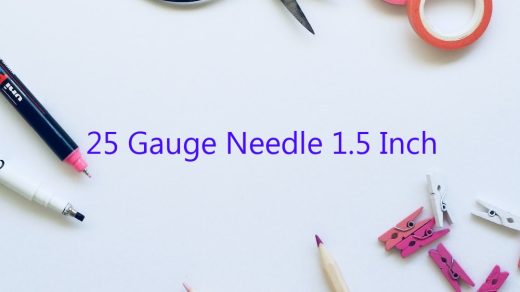When you set up your booth for a craft fair, it’s important to make sure that it is both functional and attractive. Here are a few ideas to help you get started:
1. Make sure your display is eye-catching.
You want to make sure that your booth catches the attention of passersby, so make sure to use brightly colored materials and choose a location that is easy to see. You may also want to consider using a banner or sign to announce your presence.
2. Create a comfortable work area.
In order to make the most of your time at the craft fair, you’ll need to create a work area that is both comfortable and functional. Make sure to have a table or counter to work on, as well as enough space to store your materials and supplies.
3. Use props to attract attention.
Props can be a great way to attract attention to your booth and showcase your products. Try using a variety of materials such as fabric, wood, or metal to create a visual display that will catch the eye.
4. Keep your space organized.
It’s important to keep your space organized so that potential customers can easily navigate your booth and view your products. Make sure to have plenty of signage to indicate what you are selling, and use tables and racks to display your products in an organized manner.
5. Be prepared for crowds.
Craft fairs can be quite busy, so be prepared for a lot of foot traffic. Make sure that you have enough space to accommodate potential customers, and be prepared to talk to them about your products.
By following these tips, you can create a booth that is both functional and attractive, and will help you to stand out from the competition.
Contents
How do you set up a booth at a craft fair?
Setting up a booth at a craft fair can be a fun and profitable experience. Here are a few tips on how to set up your booth and make the most of your time at the event.
First, figure out the dimensions of your booth. You will need to know how much space you have to work with. Once you know the size, you can start to plan out your display.
Next, decide what type of display you want to use. If you are using a table, you will need to bring a tablecloth and enough tableware to serve your products. If you are using a display rack, you will need to bring that as well. You may also want to bring a sign to let people know who you are.
Finally, make sure to bring enough products to sell. You don’t want to run out of items before the end of the event. You may also want to bring a few extra products to give away as samples.
By following these tips, you can set up a successful booth at a craft fair.
How many products should you have for a craft fair?
Planning to participate in a craft fair? Whether it’s your first time or you’re a seasoned pro, it’s important to have the right products to sell. Here are some tips on how many products you should bring:
First, consider the theme or focus of the craft fair. If it’s a general arts and crafts fair, you can bring a variety of products. However, if it’s a themed fair with specific products in mind, you’ll want to make sure your products fit that theme.
Second, think about the size of the fair. If it’s a small fair, you won’t need as many products as you would for a large fair.
Third, determine what kind of products you want to sell. If you’re selling handmade products, you’ll need to make each one yourself. If you’re selling products that you’ve purchased from a wholesaler, you’ll need to bring a certain number of those products.
Finally, don’t forget to factor in inventory for sales. You’ll want to have enough products to sell, but you don’t want to overload your booth and risk running out of products.
So, how many products should you bring to a craft fair? It depends on the size of the fair, the theme, and the products you’re selling. But as a general rule, try to have between 10 and 20 products to sell.
How do you stand out at a craft fair?
It can be difficult to stand out at a craft fair, especially if there are a lot of other vendors selling similar products. However, with a little bit of creativity and planning, you can definitely make your booth stand out from the rest.
One way to stand out is to create a unique display for your products. Try using different materials or unusual shapes to showcase your items. You can also use props or decorations to add interest to your booth.
Another way to stand out is to come up with a catchy slogan or tagline for your business. Make sure your name and contact information are clearly displayed, and consider handing out business cards or brochures to potential customers.
Make sure you are well-prepared for the fair and have plenty of products on hand. Be friendly and courteous to your customers, and don’t be afraid to promote your products or services.
With a little bit of effort, you can definitely make your booth stand out at a craft fair and attract more customers.
How much cash should I have for a craft fair?
When you’re preparing to participate in a craft fair, one of the most important things to consider is how much money you’ll need to bring with you. Knowing how much cash to take can help ensure that you have everything you need and avoid any last-minute surprises.
In most cases, you’ll want to bring enough cash to cover your costs for the entire event. This includes the price of your booth, any materials you’ll need to purchase, and any food or drinks you might want to buy. It’s also a good idea to have some extra money on hand in case of emergencies.
If you’re not sure how much to bring, it’s a good idea to ask the event organizers for advice. They can tell you how much it typically costs to participate in the event, and they may also be able to give you tips on how to save money.
Ultimately, the amount of cash you bring to a craft fair will depend on a variety of factors, including the size and location of the event, the cost of your booth, and your own spending habits. However, with a little bit of preparation, you can ensure that you have everything you need to have a successful event.
What do I need to sell at a craft fair?
When preparing to sell your crafts at a fair, there are a few things you will need to have on hand. Below is a list of some of the most important items:
-A table and chairs, if you will not be using the vendor tables provided
-A canopy or tent, if you will be set up outdoors
-A display for your crafts, whether it be a table, stand, or shelf
-Products to sell, of course!
-Price tags for your products
-Money box or bag
-Business cards, if you have them
-An advertising sign or banner
How do you set up a 10×10 booth?
A 10×10 booth is a great way to get your business noticed at a trade show or other event. Here’s how to set it up:
1. Decide on your booth’s layout. You’ll need a space for your company’s banner or logo, as well as a space for your products or promotional materials.
2. Set up your table and chairs.
3. Hang your banner or logo.
4. Place your products or promotional materials in your booth.
5. Get ready to talk to potential customers!
What items sell best at craft fairs?
Craft fairs are a great place to sell your arts and crafts. They provide a venue for crafters to sell their items to the public, and they offer the public a chance to purchase unique, handmade items.
Which items sell best at craft fairs? That depends on what type of craft fair you are attending. Some craft fairs are general in nature, while others are specific to a certain type of craft.
Generally, items that sell best at craft fairs are those that are unique and handmade. People attending craft fairs are looking for items that they cannot find at regular retail stores. So, if you are making handbags, jewelry, ornaments, or other crafts that are not commonly found in stores, you are likely to sell well at a craft fair.
It is also important to remember that craft fairs are a competitive market. So, be sure to price your items accordingly. You want to make a profit, but you also don’t want to price your items so high that they will not sell.
If you are new to selling at craft fairs, it is a good idea to do some research to find out what types of items sell best at your particular type of craft fair. This will help you to determine what types of crafts you should make to sell at your next craft fair.




